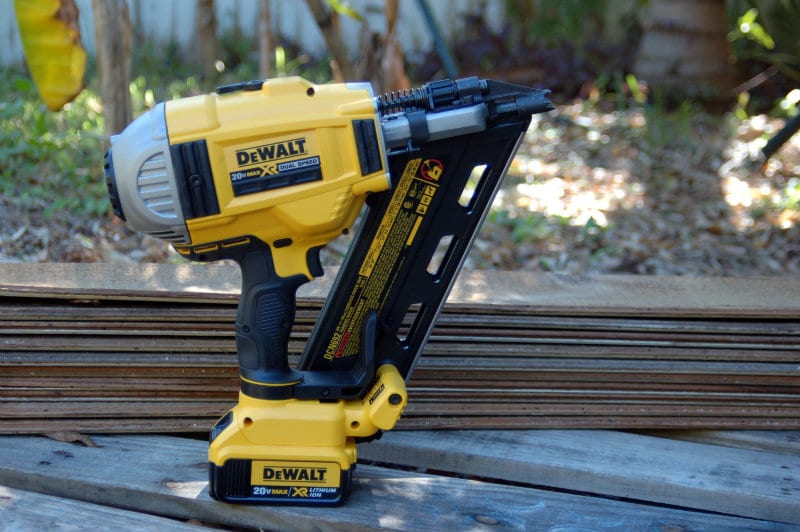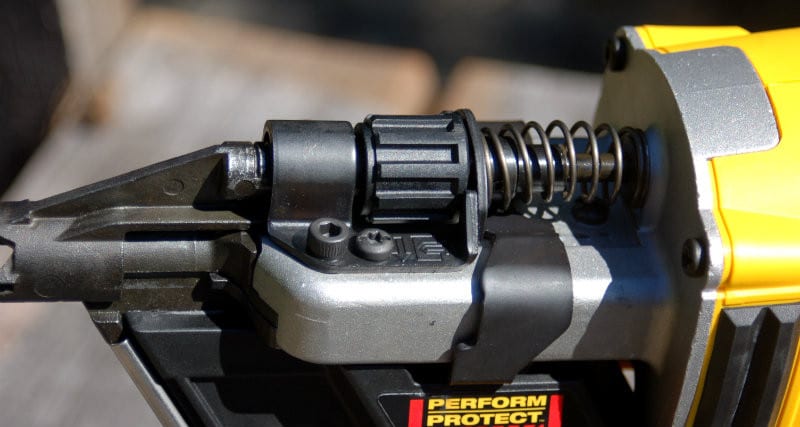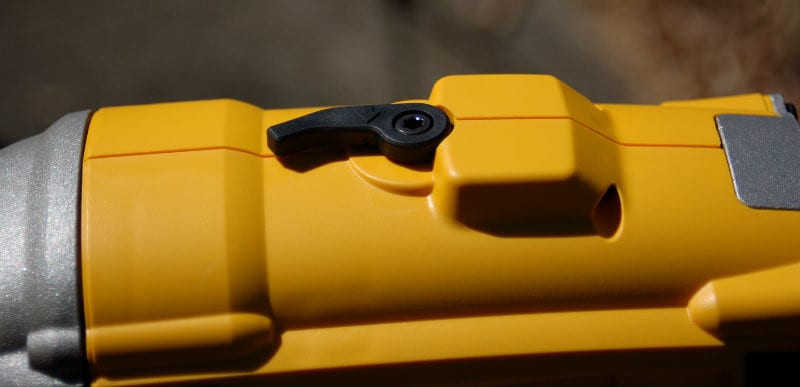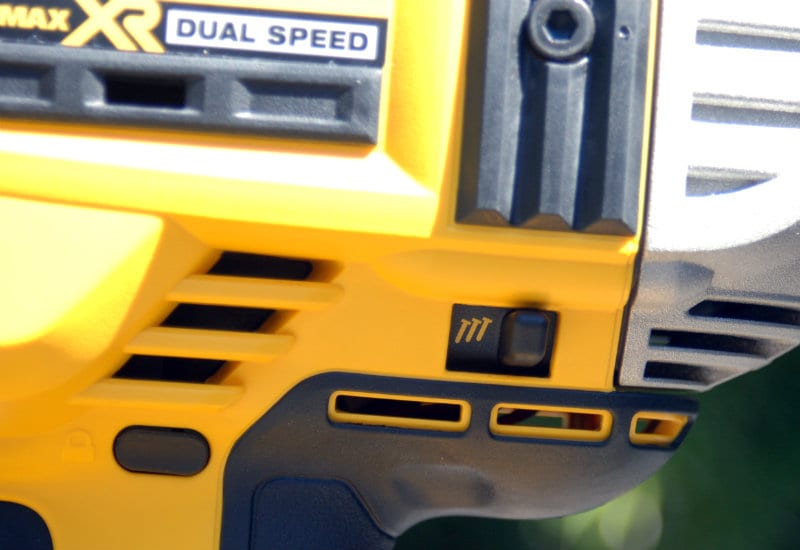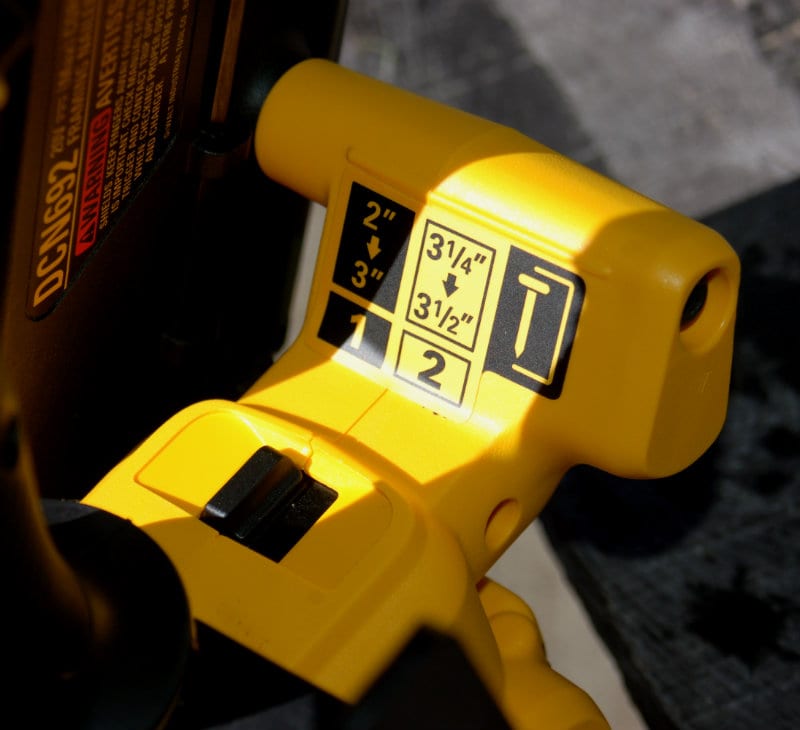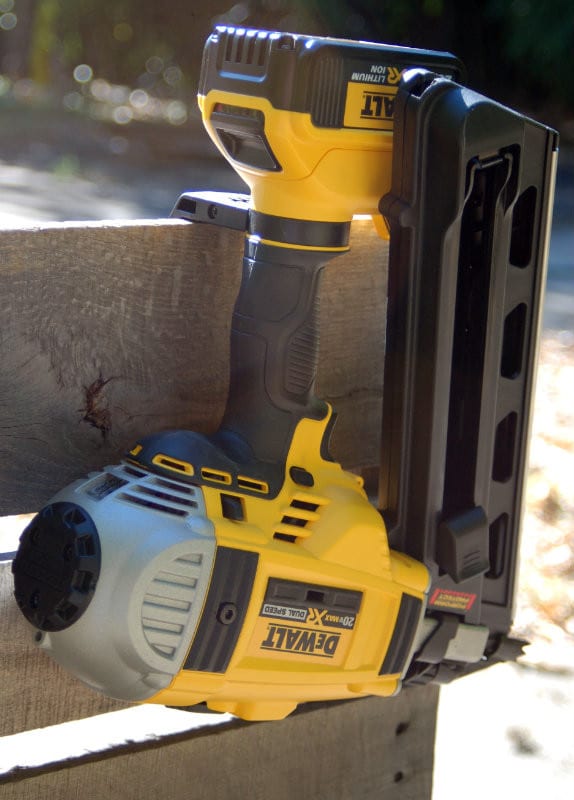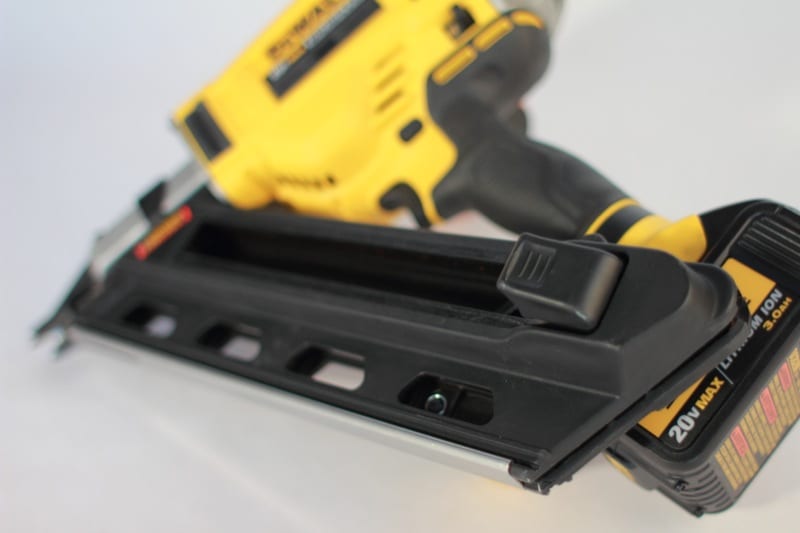Cordless nailers are becoming more readily available and more relevant as technology improves. One area that has seen little growth in that realm is framing nailers. There are certainly obstacles to overcome with these larger nail sizes. The most significant is getting enough power to fully drive a 3+” nail up to 0.131″ diameter. If you can’t achieve that, there’s not going to be much point in calling it a framing nailer. The DeWalt 20V max framing nailer (model DCN692) gets to that and actually supports nails up to 3.5-inches.
Fortunately for those of us that want to ditch the hose and the gas, we have the option of looking to the DeWalt 20V Max Framing Nailer. They’ve got two models available to choose from. The DCN690 DeWalt 20V Max Framing Nailer is a single-speed nailer while the DCN692 DeWalt 20V Max Framing Nailer is dual speed. Both feature a brushless motor that key in being able to make a lithium-ion framing nailer. We already reviewed the single-speed model, but we were able to get our hands on the dual-speed DCN692 to see if it offered significant gains in performance and features. Aside from the speed selection, the two nailers perform very similarly.
DeWalt DCN692 Features
As I mentioned, DeWalt included a brushless motor on the DCN692 20V Max Framing Nailer that helps deliver the power and efficiency required to drive framing nails. It’s capable of accepting either clipped head or offset full round head paper tape nails collated at 30 – 34 degrees. The range of lengths is from 2″ to 3-1/2″ and 0.113″ to 0.131″ diameters. While it’s capable of shooting clipped head nails, users in hurricane and earthquake-prone areas should know that their use is very limited by building codes and you’ll want to go for the offset full round heads. As it is, aside from online dealers, the ability to find clipped head nails may be an exercise in futility. I’m in Florida, and couldn’t find many brick-and-mortar stores that had any in stock.
DeWalt 20V Max Framing Nailer Specifications
- Models: DCN690 (single speed), DCN692 (dual speed)
- Power Source: DeWalt 20V Max Batteries
- Firing Modes: Bump or Sequential
- Nail Lengths: 2″ – 3-1/2″
- Shank Diameters: 0.113″ – 0.131″
- Nail Collation Angle Range: 30 – 34 degrees
- Shank Types: Smooth and Ring
- Magazine Capacity: 55 nails
- Weight: 7.8 pounds
- Warranty: 3 years limited, 1-year service agreement, 90-day money-back return
- Price: $379 (DCN690M1) / $399 (DCN692M1)
DeWalt DCN692 Framing Nailer Driving Depth Adjustment
There’s a lot to talk about in the features category for the DeWalt DCN692 20V Max Framing Nailer. Starting near the business end of the tool, you’ll find the depth-of-drive adjustment wheel. This can pretty easily be adjusted with your thumb and has 11 positive clicking positions to help you gauge where you’re at. In case you aren’t sure if you’re increasing or decreasing the depth of drive, a handy picture is etched in as a guide.
DeWalt DCN692 Jam Clearing
Jam clearing requires you to loosen three screws; two on the nose and a third on the base. This completely releases the magazine and the jam can be cleared. Also, if you’ve stalled the motor nailing into hardwoods, there is a stall release level on the top that will allow the drive cycle to reset. This disables the tool though, and you’ll need to release and reinsert the battery to reset it. In the case of a jam or stall, an indicator light will illuminate on the back of the tool next to a battery indicator.
Firing Modes
You select sequential or bump action on the side. The switch itself is actually pretty tough to move. While this should prevent accidental changing of modes, I felt like I might break it when I first flipped it. I’m hoping that it will get a little easier as I use it more. The other mode to choose is between motor speeds. You’ll find this hidden behind the rafter hook when it is tucked away. The lower speed is for 2″ – 3″ nails, while 3-1/4″ to 3-1/2″ should be fired in the higher speed mode. Using the lower speed on the smaller nails should improve efficiency for the battery. However, it’s certainly able to fire them in high-speed mode should you need more power in harder materials.
DeWalt DCN692 Additional Features
You’ll find that there is a trigger lock-off for safety during non-use and transportation. There’s also a swiveling rafter hook that’s very handy. It is rigid and substantial enough to come across as very durable. It is wide enough to accommodate hanging on 2x material and can rotate around to either side.
Performance…Wait for It…Literally
Three main areas of performance were in my sights: power, speed, and run time. I was shooting 2-3/8″ nails and the power is adequate. I can fully drive each nail in the recommended Low-speed setting without much of an issue. Bumping it up to the higher speed setting, I can easily sink each nail below the surface in softer materials like pine. Hardwoods and LVL are a different story.
Speed is a factor that you’ll notice a difference in. It wasn’t difficult to find a rhythm that the DeWalt 20V Max Framing Nailer could keep up with in bump-fire mode. It was much slower than I have been able to use with a compressor powered nailer, however. There’s also a significant difference in speed in sequential fire mode. That’s because you’re having to wait for the motor to spool up the flywheel before each shot.
Runtime is pretty solid with this nailer. Firing framing nails is no joke when it comes to producing enough power and using a 20V battery to do it. I was able to get in more than 500 shots before stopping to recharge the battery. While there was still some juice left, it’s not a good idea to completely discharge a Lithium-ion battery if you’d like to maintain your battery and extend its lifespan. For the Pros out there, 500 shots are good, but you’re probably going to want a second battery as a spare while the other recharges.
One thing that stood out to me as I was using the DeWalt 20V Max Framing Nailer is that I did not experience any jamming. There were a couple of attempted shots that didn’t go during testing, but that was due to the nailer still resetting the drive cycle while I had gotten ahead of it.
Parting Shots (Get it?)
The DeWalt 20V Max Framing Nailer performed well in my tests. While I’m content in that department, there are a few considerations that may limit who the best end-user is for it. Weight is one of the biggest considerations here. At 9.1 pounds, the DCN692 is heavier than most framing nailers on the market. It also only has a 55 nail capacity and a 7-9 nail remaining dry fire lockout. This means you’ll be reloading one strip at a time and more frequently. Bump fire moves along at a decent clip, but sequential requires you to wait for the motor to spool up which slows down production.
When it comes to value, the compressor powered nailer is still the way to go. 30-degree nailers aren’t that widespread in our area, and there is a premium on the price of the nails. I’d love to see DeWalt retool this with a 21-degree magazine that would make this cordless nailer about the same price as a Pro level pneumatic with a Pro level compressor. The cost per shot would then be equal and we’re talking a major win in value.
Our Recommendation
For these reasons, it’s the professional end-user that needs a framing nailer for occasional use that is going to benefit the most. Pros that are using a framing nailer for the majority of the day or a lot of overhead work will likely prefer the lighter weight and faster action of traditional compressor powered or gas-assisted nailers.
Still, we really like the quicker performance of the Metabo HPT cordless framing nailer. It uses the battery to charge a pressurized gas chamber as opposed to operating a flywheel. As a result, it’s a much more responsive tool.
Don’t let that sway you from a performance standpoint though. The DeWalt 20V Max Framing Nailer did very well for me. I’m in the boat of occasional framing nailer user and the DCN692 has found a home in my arsenal. The fact that I have no compressor and hose to drag around, nor gas cartridges to keep replacing gives this nailer a convenience factor that outweighs its limitations. If you’re a pro needing a framing nailer for occasional use and want to go cordless, the DeWalt 20V Max Framing Nailer is for you.

